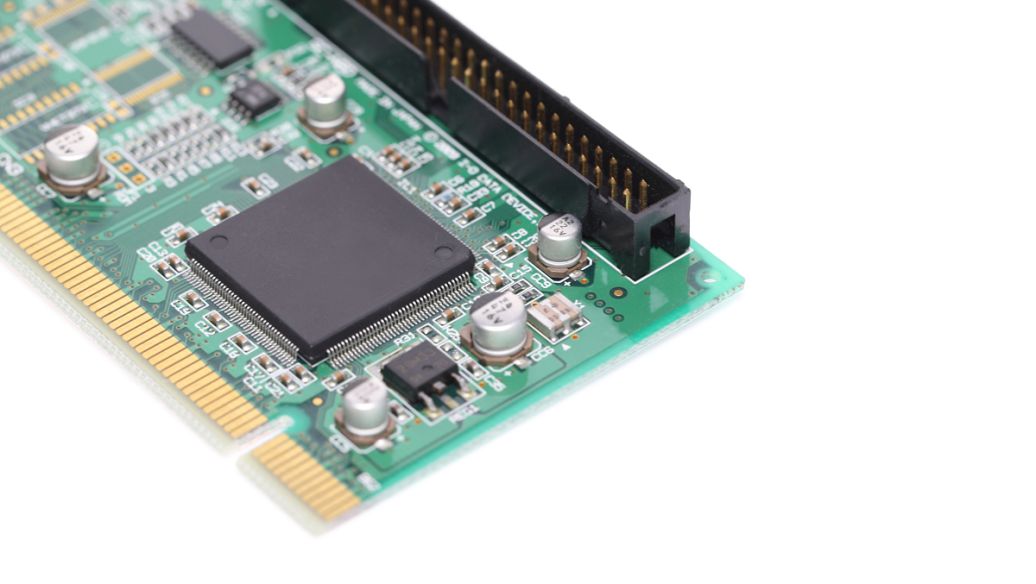Some readers have never been exposed to a microcontroller and have a vague concept of what a microcontroller is. In this issue, we have specially launched this introductory article to let you know what a microcontroller is like and what types it is. How does it work? What peripheral circuits does it need to complete our communication with it? I hope that after reading it, you can have a comprehensive understanding of the small microcontroller and use it to make more fun and interesting works.
The microcontroller is an integrated circuit chip that uses very large-scale integrated circuit technology to integrate a central processing unit (CPU) with data processing capabilities, random access memory (RAM), read-only memory (ROM), various I/O ports and interrupt systems, and timers/counters. etc. are integrated on a chip to form a small but complete computer system. Some microcontrollers also include display driver circuits, pulse width modulation circuits, analog multiplexers, A/D converters and other circuits.
Microcontroller classification
There are many types of microcontrollers, and they can be classified in different ways according to different standards. For example, according to application fields, they can be divided into: home appliances, industrial control, communications, personal information terminals, etc., and according to versatility, they can be divided into: general-purpose and special-purpose. The main features of general-purpose microcontrollers are: relatively rich internal resources, comprehensive performance, and strong versatility, which can cover a variety of application requirements. The so-called rich resources refer to strong functions. Comprehensive performance and strong versatility mean that it can be applied in a very wide range of fields. General-purpose microcontrollers have a wide range of uses. Different functions can be completed by using different interface circuits and programming different application programs. Everything from household appliances and instruments to large machinery and equipment and entire production lines can all be automated and controlled by microcontrollers. The main features of the dedicated microcontroller are: specially designed for a certain product or a certain control application. The design has the simplest structure, the best software and hardware applications, and the best reliability and application cost. There is also a special-purpose microcontroller that has a more specific purpose. The program has been solidified once before leaving the factory and cannot be modified. For example, the microcontroller in an electronic watch is one of them, and its production cost is very low.

Commonly used microcontrollers
Generally, when we are in electronic design, robot production, and smart car production, the commonly used microcontrollers are general-purpose microcontrollers. The following are several commonly used microcontrollers.
1.8051 series single-chip microcomputer The 8051 series single-chip microcomputer was first launched by Intel Corporation, mainly including the 8031 series and the 8051 series. Since then, many companies have purchased the core intellectual property of 8051, making the series of microcontrollers with 8051 as the core the largest in the world and the most widely used. Atmel has launched the AT89 series of microcontrollers based on the 8051 core. Among them, AT89C51, AT89C52, AT89S51, AT89S52 and AT89S8252 and other microcontrollers are fully compatible with the 8051 series microcontrollers. All the instruction functions are the same, but a series of expansions have been made in terms of functions. For example, the AT89S series all support the ISP function, and the AT89S52 and AT89S8252 add internal WDT functions and a timer. In order to make learning easier, Atmel has also launched AT89C2051, AT89C4051 and other microcontrollers that have exactly the same instructions as 8051. These microcontrollers can be regarded as streamlined 8051 microcontrollers. Figure 1 shows the AT89S52 microcontroller chip.
2. AVR microcontroller ATMEL company’s AVR microcontroller is an enhanced RISC (reduced instruction set) microcontroller with built-in Flash. The Flash memory on the chip can be programmed and reprogrammed at any time, making it easy for users to design products and upgrade them. The AVR microcontroller adopts an enhanced RISC structure, which enables it to have high-speed processing capabilities and can execute complex instructions in one clock cycle, achieving a processing capability of 1MIPS per MHz. The operating voltage of the AVR microcontroller is 2.7~6.0V, which can optimize power consumption. AVR’s microcontrollers are widely used in various fields such as computer peripheral equipment, industrial real-time control, instrumentation, communication equipment, household appliances, and aerospace equipment. Figure 2 shows an AVR microcontroller ATmega168 chip from ATMEL.
3. PIC microcontroller The PIC microcontroller series is a product of the American Microchip Company (MicroChip) and is one of the microcontrollers with the fastest growing market share. The CPU adopts a RISC structure, with 33, 35, and 58 instructions respectively (depending on the level of the microcontroller), and is a simplified instruction set system. The 51 series has 111 instructions and the AVR microcontroller has 118 instructions, both of which are more complex than the PIC. PIC adopts Harvard dual-bus structure and has fast operation speed (instruction cycle is about 160~200ns). It can enable parallel processing of program memory access and data memory access. This instruction pipeline structure completes two parts of work in one cycle: one is to execute the instruction, and the other is to fetch the next instruction from the program memory. In general, except for a few instructions, each instruction only needs one cycle to complete the task. The execution is completed, which is one of the reasons why it runs efficiently. In addition, it also has the characteristics of low operating voltage, low power consumption, and strong driving capability. PIC series microcontrollers are divided into three levels, namely basic level, intermediate level and advanced level. PIC microcontrollers are widely used in consumer electronics, industrial electrical, medical equipment, automotive electronics, etc. Its market share in the global microcontroller market is growing year by year. Figure 3 shows the commonly used PIC16F873 microcontroller chip.